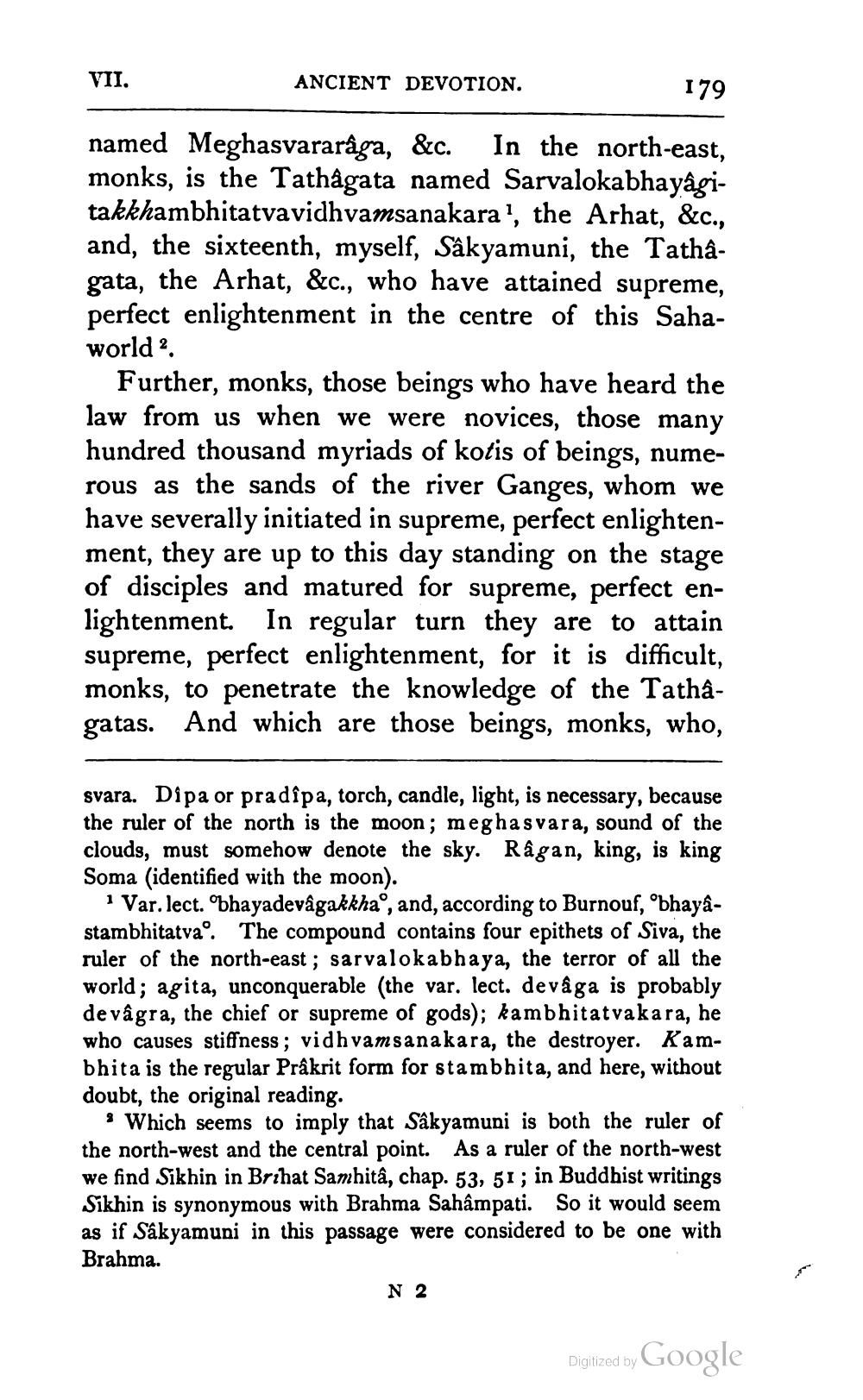________________
VII.
ANCIENT DEVOTION.
179
named Meghasvararåga, &c. In the north-east, monks, is the Tathagata named Sarvalokabhayagitakkhambhitatvavidhvamsanakara', the Arhat, &c., and, the sixteenth, myself, Sâkyamuni, the Tathagata, the Arhat, &c., who have attained supreme, perfect enlightenment in the centre of this Sahaworld 2
Further, monks, those beings who have heard the law from us when we were novices, those many hundred thousand myriads of kotis of beings, numerous as the sands of the river Ganges, whom we have severally initiated in supreme, perfect enlightenment, they are up to this day standing on the stage of disciples and matured for supreme, perfect enlightenment. In regular turn they are to attain supreme, perfect enlightenment, for it is difficult, monks, to penetrate the knowledge of the Tathagatas. And which are those beings, monks, who,
svara. Dipa or pradîpa, torch, candle, light, is necessary, because the ruler of the north is the moon; meghasvara, sound of the clouds, must somehow denote the sky. Râgan, king, is king Soma (identified with the moon).
1 Var. lect. Obhayadevågakkhao, and, according to Burnouf, obhayastambhitatvao. The compound contains four epithets of Siva, the ruler of the north-east; sarvalokabhaya, the terror of all the world; agita, unconquerable (the var. lect. devaga is probably de vâgra, the chief or supreme of gods); kambhitatvakara, he who causes stiffness; vidhvamsanakara, the destroyer. Kambhita is the regular Prakrit form for stambhita, and here, without doubt, the original reading.
? Which seems to imply that Sâkyamuni is both the ruler of the north-west and the central point. As a ruler of the north-west we find Sikhin in Brihat Samhita, chap. 53, 51; in Buddhist writings Sikhin is synonymous with Brahma Sahâmpati. So it would seem as if Säkyamuni in this passage were considered to be one with Brahma.
N 2
Digitized by Google




